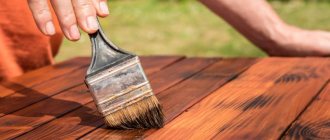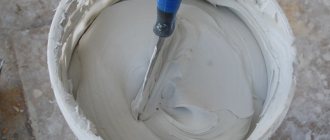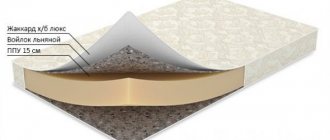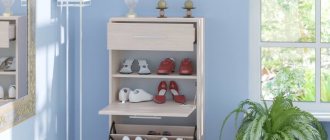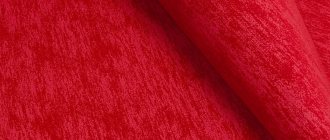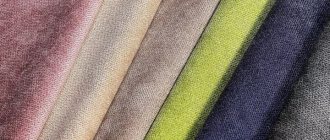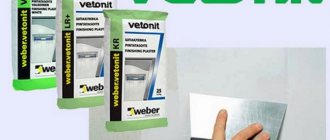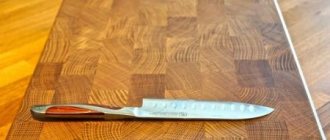Composition, brands and GOSTs
Foamed polyurethane foam (FPU) is produced by mixing two liquid polymers: polyol and polyisocyanate. Cured foam contains up to 90% gas in its cells, which ensures high thermal insulation qualities of polyurethane foam. Depending on their proportion and the presence of fire retardant additives, the final product differs in structure, technical characteristics and scope of application.
Soft and elastic foam rubber is used as a filler for furniture and household products. Brands of foam rubber have different densities (from 5 to 40 kg/m3) and hardness:
| Marking | Rigidity | Maximum load kg/cm2 |
| ST | Standard | 60-100 |
| H.L. | Hard | 80-120 |
| H.S. | Soft | 60-120 |
| EL | Increased rigidity | 60-100 |
| HR | Highly elastic | 100-120 |
| CMHR | Highly elastic, fireproof Special purpose | 100-120 |
With the exception of the last brand, foam rubbers are classified as highly flammable substances according to GOST 30244, flammable according to GOST 30402 , and smoke-generating and toxic when burning according to GOST 12.1.044. For these reasons, foam rubber is not used in construction.
Polyurethane foam with fire retardant additives is called rigid polyurethane foam. It is characterized by increased density (30-86 kg/cm3), loses its elasticity when finished, but has a lot of other advantages. It is used in construction for heat and sound insulation, and ultra-dense types (from 70 kg/cm3) are used for waterproofing in building foundations and on other surfaces.
Construction polyurethane foam is prepared from two components: polyol (component A) and isocyanate (component B). Isocyanate serves as the basis of the chemical process and its composition does not change, but different polyols are used, which affects the foaming rate, density and flammability. According to GOST 307302-2006, polyurethane foam belongs to the G3 flammability class (self-extinguishing, difficult to ignite, difficult to burn) and is recommended for thermal insulation of buildings and pipelines.
As a thermal insulation material, polyurethane foam is easy to manufacture and can be mixed on site, and the components for polyurethane foam are often cheaper to buy and deliver to a construction site than to transport the finished product.
If you have a professional high-pressure foam generator and observe the proportions of the components, such a foam foam is in no way inferior to the factory one. Foam can be sprayed onto various surfaces or made into sandwich panels.
Application technology
The most common method of polyurethane foam insulation is spraying onto the structural elements of the building.
PPU is sprayed onto the walls.
But there is another way - pouring, which requires a space closed on all sides. It is mainly used in factories producing sandwich panels.
Filling with polyurethane foam.
On the floor
Before spraying insulation on the base of the floor, preparatory work is carried out, including: removing the old screed, repairing the concrete base (in a wooden house the subfloor is being restored), waterproofing the ceiling or subfloor. The preparatory process is described in more detail in the material “Preparing the floor for pouring screed.”
A lathing for laminate, parquet, linoleum or joists for floorboards is mounted on the prepared surface. At the same time, both the sheathing slats and the joists should be 20-30 mm higher than the insulation. The gap is necessary to ensure ventilation.
On the walls
The technology for insulating the facade and walls from inside the room is the same. Consists of sequential operations:
- the old finish is removed from the surface of the walls (you can see how to quickly remove it in the work “Aligning walls for painting”);
- the sheathing is installed;
- polyurethane foam is sprayed. In this case, special attention must be paid to corners, crevices and voids;
- areas with protruding insulation are trimmed with a knife (easy to detect as a rule);
- Drywall is attached to the sheathing for finishing with wallpaper, painting or decorative plaster.
To the ceiling
Insulation of the PPU ceiling is carried out under a suspended or suspended ceiling. In this case, the old finish is removed from the surface of the floor slab, after which foam is applied in a thin layer (lathing is not required).
On the roof
The roof is one of the few places in the house where you can do polyurethane foam insulation work yourself. To do this, you need to buy special kits with 2 small cylinders and a sprayer. The containers contain the starting reagents, and a sprayer is needed to mix the components. But before starting work, you need to calculate the financial costs so that the roof does not literally turn out to be golden.
Semi-professional kit for PPU insulation.
Preparing the roof for insulation is simple: the surface is dust-free and dried. PPU is applied from the inside between the rafters. After the foam has hardened, the thermal insulation layer is covered with sheets of plywood or OSB.
PPU roof insulation scheme.
The editors of the portal StroyGuru.Com tried to objectively talk about such a controversial insulation material as polyurethane foam. Having complete information about the material, you can make an informed choice and avoid mistakes.
Forms of release of polyurethane foam
The chemical industry produces the following types of polyurethane foam:
- Foam rubber - in rolls and mats;
- Rigid polyurethane foam - in sheets, panels and cast shells;
- Liquid polyurethane foam - in the form of a spray coating.
Thermal insulating panels made of polyurethane foam are produced in various thicknesses and with a variety of protective coatings. For sheet polyurethane foam the price per 1 m2 is as follows:
| Name of material | Thickness, mm | ||||||
| 20 | 30 | 40 | 50 | 60 | 80 | 100 | |
| PPU without coating | 378 | 426 | 522 | 612 | 712 | 923 | 1198 |
| PPU with paper | 378 | 426 | 522 | 612 | 712 | 923 | 1198 |
| PPU foil | 427 | 475 | 571 | 661 | 761 | 972 | 1247 |
| PPU foiled with armofol | 375 | 412 | 493 | 568 | 650 | 826 | 1055 |
| PPU with one-sided fiberglass coating | 516 | 564 | 660 | 598 | 680 | 856 | 1085 |
Kinds
Experts distinguish three types of polyurethane foam:
Hard
This type of material has high density, hardness and lightness.
Thanks to these characteristics, it is used as acoustic or thermal insulation. Hard polyurethane foam looks like slabs. One of the applications is sandwich panels.
Technical characteristics of polyurethane foam
A standard medium-density thermal insulating polyurethane foam panel has the following characteristics:
| Characteristics, unit of measurement | Meaning | A comment |
| Compressive strength with deformation up to 10%, MPa | 0,46 | An excellent indicator, for comparison, for foam concrete the coefficient is 0.4-1.2, for expanded polystyrene (EPS) 0.06, for mineral wool 0.002 MPa. |
| Volumetric weight (density), kg/m3 | 45-60 | An ultra-light material, mineral wool has a density of 150-250, foam concrete has a density of 250-400 kg/m3. |
| Shrinkage, mm/m | — | No shrinkage of the hardened foam was detected. |
| Thermal conductivity, W/m*K | 0,021 | Minimum, lower than that of analogues: PPS - 0.035-0.042, mineral wool - 0.035-0.6, foam concrete - 0.08-0.13 W/m*K. |
| Frost resistance, cycles | 1000 | A very high figure. |
| Water absorption,% | 2 | Excellent value among analogues: foam concrete 15-20%, EPS 0.5-1.5%. |
| Vapor permeability, mg/m*h*Pa | 0,001 | Almost absolute vapor barrier. For PPS the indicator is 0.002-0.005, for mineral wool it is 0.29, for foam concrete it is 0.23. |
| Fire resistance | G3 | Refractory, self-extinguishing substance. |
| Cost RUR/m2 | 300-1800 | The price of PPU panels depends on the thickness and protective layers (paper, foil, galvanized steel, etc.) |
| Soundproofing | High | Similar to PPS, superior to foam concrete and mineral wool. |
| Toxicity (environmentally friendly) | Non-toxic | Does not emit harmful compounds, dust, has no odor. Used in food refrigerators. |
| Service life, years | 50 | One of the most durable types of thermal insulation. |
Manufacturers
Polyurethane foam insulation has become popular recently. Therefore, new manufacturers of these products are appearing on the market, as well as contractor companies providing installation services.
Reputable PU foam suppliers produce components under their own brands. The rest, as a rule, are resellers, purchasing components from well-known brands. Some firms use local oil refineries.
Using consumer reviews, we can identify several reliable polyurethane foam manufacturers:
Basf
A German chemical concern with branches in 160 countries. The brand produces a wide range of products.
More than 7 thousand items, 60% of which are sold on the European market, about 22% of sales are in the United States of America, the rest is distributed between the markets of South America, Asia, Africa and the Pacific.
In Russia, the company has several subsidiaries, including BASF Construction Systems LLC, BASF Vostok LLC, Wintershall Russland. One of the well-known joint ventures producing polyurethane foam products is.
The company produces polyurethane systems that are available to consumers of any level and for various applications.
Synthesia International SLU
Spanish chemical company founded in 1964. The main direction since 1966 is the production of polyesters, as well as polyurethane systems for various industrial sectors, for example, thermal and acoustic.
Since 1970, polyurethane foam for sandwich panels, construction and refrigeration systems first appeared in the product range. Today the company produces products for different market segments.
The most famous distributor of products in Russia is Global Therm LLC.
This company provides direct deliveries, carries a certain supply of products in a warehouse in Moscow, guarantees a flexible payment system and consultations with technical specialists.
Sipur (Poland)
One of the largest manufacturers of sprayed polyurethane foam insulation.
Thermal insulation products are characterized by low thermal conductivity, which allows the insulation to be applied in a thinner layer (spray thickness up to 6 cm). The company guarantees a service life of polyurethane foam of about 50 years.
Unique qualities
- High adhesion (adhesion) to most surfaces. Polyurethane foam is sprayed onto concrete, metal, wood, brick, glass;
- Installation without fasteners;
- Absence of “cold bridges” with seamless thermal insulation;
- Anti-corrosion protection of pipes and metal structures;
- Possibility of manufacturing heat-insulating “shells” of a given shape by pressing liquid polyurethane foam;
- Operation in the temperature range from -200 to +200°C;
- Inert to most acids, alkalis and soil salts.
Liquid polyurethane foam allows you to fill cracks and spaces between walls where other insulation cannot be installed. Due to its light weight and adhesive factor, it does not weigh down structures and strengthens them.
Application
The universal material is used in almost all areas of industry:
- Automotive: car seat filler, vehicle interior soundproofing.
- Mechanical engineering: cold insulator in household and commercial refrigerators, large refrigeration chambers, transport refrigeration equipment, medical installations.
- Transport: heat insulators for main pipelines, insulators for low-temperature pipelines in the chemical industry.
- Shoe industry: production of instep supports and other shoe elements.
- Furniture: soft polyurethane foams are used as filler and cushioning material for upholstered furniture.
- Lightweight: PU foam filler is used for sewing soft toys, mattresses, pillows, and mannequins.
- Construction: sandwich panels, acoustic insulation, waterproofing, thermal insulation raw materials for residential and industrial premises, warehouses, garages, hangars. To seal cracks and spaces between loosely fitting parts, urethane wood glue is used.
PPU for furniture
The chemical compound is a technological analogue of springs. It is simpler and cheaper to produce, and in terms of performance characteristics it does not lag behind, and in many cases even surpasses, springs. Polyurethane foam for furniture is available in different forms:
- Sandwich or block. This is a large “brick”. During the production process, furniture factory workers cut it into layers of different shapes and thicknesses. Then experts combine hard and soft layers, folding them into seats and backrests.
- Cast. Produced at a furniture factory. The liquid mixture is filled into a shaped blank, a chemical reaction occurs in it, and the polyurethane foam hardens under pressure. The final product takes on the exact size and shape of the sofa cushion or seat. Pros - no scraps, cons - a “crust” forms on the surface of the block, which does not allow air to pass through well. The price of sofas with molded polyurethane foam is higher than that of models with block lining.
Soft polyurethane foam with a density of 30-40 kg/m3 is used for furniture. The higher the indicator, the tougher and more durable the product. Low density polyurethane foam (up to 25 kg/m3) is suitable for decorative pillows. There are several types of materials with a polyurethane foam base: lokfoam, vibrofoam, Fomex (USA), moltoprene (Germany), allofoam (Canada). Their characteristics are similar to domestic polyurethane foam.
Compounds with a memory effect (memoform, memorix) deserve special attention. Thanks to special additives, the material becomes highly elastic. It knows how to maintain the shape of the person sitting and perfectly adapts to the curves of the body. When a person rises, the memorix quickly straightens. Polyurethane memory foam was originally developed for NASA, but then became popular in light industry.
The manufacturer promises a comfortable sleep, because Memorix gently envelops the body without squeezing the blood vessels. Highly elastic polyurethane foam also has disadvantages, and significant ones. After unpacking, customers feel a toxic odor that does not always disappear even after a week. There is no question of environmental friendliness and health safety, because after examination, a sample of Memorix was found to contain toxins that cause allergies, asthma, eye irritation, and headaches. Hydrocarbons emit a bitter-sweet odor and affect the nervous and immune systems.
In Western countries with enhanced environmental safety control, Memorix does not contain hazardous chemical components. Sanitary standards in the CIS countries are not so strict. Some people are ready to buy very expensive Memoryx pillows and mattresses and endure the unpleasant aroma, because after sleeping on them, back and neck pain goes away. There are also rave reviews about Memorix online - buyers of a quality product are very satisfied with their purchase.
Polyurethane foam thermal insulation
A liquid mixture is used to insulate structures of any type. It is applied by spraying. Using special equipment, polyurethane foam is sprayed onto the wall, foundation, roof or various containers, which instantly increases in volume and fills cavities and cracks. The composition hardens after 5-10 minutes. The monolithic porous “coat” firmly adheres to the surface, has no seams or joints, and therefore reliably protects against heat leakage or penetration (relevant in the summer when the air conditioning system is running).
The number of closed cells is more than 92%, and for the best samples it is 97-98%. Thermal conductivity reaches 0.019-0.035 W/m°C. This indicator is the lowest among other insulation materials - polystyrene foam, polystyrene foam, polyethylene foam. Thermal insulating polyurethane foam has good moisture resistance. To reduce hygroscopicity, additives are added to the composition. Castor oil reduces hydrophilicity by 4 times. Polyurethane foam is resistant to basic chemical compounds: it does not dissolve in gasoline or diesel fuel. The service life of the “fur coat” is 20-30 years.
For insulation, ready-made thermal insulating polyurethane foam parts are also used: blocks, panels, semi-cylinders (pipe shells), but in terms of demand they are inferior to liquid polyurethane foam. The latter is applied not only to open surfaces, but also serves as an intermediate layer in sandwich panels. The flammability class of the substance is G2 and G3. The compound is not an active source of combustion; it will immediately go out if the fire is removed from it.
- Homemade eclair recipe with photo
- Posture corrector - review of models and contraindications
- How to make slime without sodium tetraborate
Minuses
- It is destroyed by ultraviolet radiation and needs to be insulated from sunlight. This is a completely solvable issue; the modern range of sandwich panels provides any coating for sheet polyurethane foam.
- The foam is applied only to a dry and warm surface, which limits its use on open construction sites in winter.
- Polyurethane foam does not burn, but it can smolder due to high temperatures, which affects the strength of the thermal insulation. Not recommended for boiler rooms, baths and saunas.
Is polyurethane foam harmful to health? The finished product is safe for humans. During the process of mixing and spraying insulation, it is necessary to observe safety precautions, work in a protective suit and only with proven equipment and certified reagents.
Peculiarities
They are used very widely: rigid - as heat and sound insulation and lightweight form-building elements, elastic - as soft coverings and padding in everyday life and industry, as artificial sponges for washing and dust filters, material for paint rollers and inserts in garments, shock-absorbing package.
Self-foaming self-hardening compounds are popular for use directly on site in construction and mechanical engineering - both industrial multicomponent and household polyurethane foam.
Resistant to all common organic solvents, the frozen mixture can only be removed mechanically. In practical applications, protection from sunlight and other UV sources is required.
Compared to other foamed polymers used in limited areas - rigid polystyrene foam, elastic polyethylene foam, latex foam, microporous rubber, swelling cellulose sponge - the range of use of polyurethane foams is, as a rule, wider.
Installation methods
Spraying a thermal insulating coating made of polyurethane foam is a fast and high-quality installation method. To successfully spray thermal insulation you need:
- Dry, clean work surface;
- Lack of precipitation (rain, snow, fog);
- Wind no stronger than 5 m/sec;
- Working surface temperature from +10°C;
- Mixture temperature +18-25оС;
- The thickness of the sprayed layer is 3-5 cm.
The work is carried out in a protective suit and mask, in a ventilated room, starting with hard-to-reach areas (pipes, ventilation hatches, etc.). The sprayed layer in one pass is about 15 mm; for reliable insulation, the surface is treated several times.
How to insulate yourself?
When starting to build or renovate their home, many people think about insulating it themselves without involving specialists. It's actually possible to do this. The main thing is to know the technology of working with polyurethane foam and strictly adhere to it.
Insulation of balconies and loggias
To insulate a balcony or loggia with polyurethane foam, two main methods are used: spraying and pouring. The first method is classic. It is used to treat any surfaces. Chemical components are mixed in a special apparatus. The machine begins to foam the composition, after which it can be sprayed onto clean, dry surfaces of walls, floors, and ceilings.
Liquid polyurethane foam can also be applied by pouring. To do this you will have to build a sheathing. The material is poured between the surface of the balcony wall and the sheathing. After hardening, it forms a strong, durable coating with excellent thermal insulation properties.
Basement
It is better to insulate the basement from the outside during the construction stage of the house. If this has not been done, you will have to work indoors. To simplify and speed up the process, sheet polyurethane foam is used. The work is divided into several stages:
- All surfaces are cleaned of dirt, falling pieces of plaster, and mold.
- A layer of waterproofing is applied. This could be mastic, liquid rubber, bitumen, and so on.
- PPU panels are laid. This can be done using glue. But for reliable and durable installation, it is recommended to use “fungi” dowels.
- After this, you can cover the insulation with finishing materials.
If polyurethane foam spraying is chosen as insulation, then waterproofing is not required. The liquid material penetrates into all cracks, reliably protecting it from aggressive influences.
Walls
Wall insulation is carried out both outside and inside the premises. The first method is preferable. This will allow you to move the area of condensation formation outside the room, preventing the destruction of the structure.
For walls it is recommended to use liquid polyurethane foam. It allows you to create a dense protective coating without joints. The polyurethane foam spraying process is divided into several stages:
- The surface is cleaned of dust and cement deposits. If there are large cracks. They are filled with cement mortar.
- The sheathing is being made. It is better to use wooden blocks for it. The distance between them should be at least 10 cm.
- PPU is being prepared. This can only be done after wearing a protective suit. The two main components are mixed in a special apparatus. It will not be possible to carry out work without it.
- Polyurethane foam should be sprayed onto the walls from bottom to top. The sprayer is kept at a distance of 5-6 cm from the surface.
- After completing the work, remove the spray nozzle and close the taps on the tanks with components.
It is very difficult to carry out such work correctly on your own. In addition, expensive equipment will be required. For a small private house, its purchase turns out to be impractical. Therefore, it is better to seek help from professionals.
Floor
Polyurethane foam is rarely used for floor insulation. This is due to its low vapor permeability. Often after such work a musty smell appears in the room. This material can only be used if there is a warm basement or basement under the floor.
Reviews from professionals recommend using sprayed polyurethane foam most often. The process of installing it is no different from working with walls. The material is also sprayed into the space between the sheathing. After the foam has completely dried, you can proceed to laying the flooring.
Attics and attics
Insulating the roof and walls of the attic allows you to reduce heating costs in winter and avoid a significant increase in temperature in summer. It is extremely difficult for a novice master to carry out such work on his own. Liquid polyurethane foam will need to be applied to vertical walls, as well as to roof surfaces with a negative slope.
Application of the material is allowed only in the warm season. All windows and doors are covered with plastic film. The first layer of sprayed polyurethane foam should have a thickness of about 15 mm. If necessary, after it has completely dried, additional material is applied.
Is a polyurethane foam mattress harmful to health?
This controversial issue does not go unnoticed in the modern world. Polyurethane foam is a polymer that contains organic compounds at its core. They are obtained from oil - these are hydrocarbons. In the process of heating the material to human body temperature, it releases harmful odors and chemical elements.
This fact is the main component of the opinion about the dangers of foam rubber. But there is one argument in favor of the filler. Toxicity is caused by improper production of foam rubber. Hence the conclusion is that purchasing a mattress with such a filling element should be based on the right choice.
Definition
To better understand what polyurethane foam is, we will give a brief definition of the material - it is a synthetic foam with a cellular structure. Refers to a section of plastic filled with a special inert gas, and is often used in construction and manufacturing.
Among the undoubted advantages:
- • long-term use;
- • ease of operation;
- • minimal thermal conductivity;
- • excellent adhesion.
This is one of the high-quality insulation materials that is often used to improve the structural features of a house. Some surfaces are covered with gas-filled polyurethane foam of complex shapes. It has a long lifespan and is easy to use on construction sites.
How is it different from foam rubber?
Foam rubber is a type of elastic polyurethane foam.
The cellular porous structure provides good air, vapor and moisture permeability. The degree of elasticity is regulated by the addition of different types of polyol during production.
When choosing consumer goods, it is necessary to remember that “foam rubber” is the trade name of polyurethane foam , which was registered in the Soviet period by a Scandinavian company of the same name.
Foam rubber is mainly used in the light and furniture industries. Furniture upholstery, fillings for mattresses and pillows, soft toys, mannequins - this is a list of the most common uses of this type of polyurethane foam.
The material is characterized by different thicknesses and, accordingly, different rigidity. It is mainly produced in the form of sheets or blocks.
Different types of foam rubber are combined in the furniture industry, which improves the quality of the products.
For example, a more rigid sheet is used for a sofa seat than for the backrest.
Orthopedic products, as a rule, should not be soft. They are designed to ensure that the body is positioned correctly and comfortably. For this purpose, a new type of foam rubber with a “memory effect” was developed. It is able to return to its original shape after deformation. During operation, such material follows the contours of the body of the person lying on it, which allows you to relax as comfortably as possible.
The main mechanical characteristics of foam rubber, on which the service life of furniture products depends:
- rigidity;
- density;
- strength;
- elasticity;
- cell size;
- support coefficient.
For example, the support coefficient and cell size are decisive in highly elastic types of polyurethane foam.
Furniture foam rubber is subjected to significant loads, so conscientious manufacturers use the material with the highest density. It can easily withstand long-term dynamic loads and static weighting.
Safety
A material is said to be environmentally friendly if only high-quality components and professional equipment were used when pouring the thermal insulation coating. It is equally important that the spraying is done by a qualified craftsman - how he mixes the components affects the safety of the coating. Raw materials for polyurethane foam belong to hazard classes 2 and 3, and after hardening, a material characterized by inertness is formed.
If the proportions of the starting components are chosen incorrectly or the technology for preparing the liquid mixture is violated, the chemicals will not react completely. The result is a pungent, toxic odor that does not dissipate well and causes illness. An experienced craftsman does not make mistakes, making the coating environmentally friendly and non-flammable.
During the mixing of raw materials, toxic formaldehyde, benzene, phenol and toluene diisocyanate are formed. After applying the “coat,” they evaporate within a day and are no longer released, unlike foam plastic or mineral wool. Opponents of the chemical compound focus on the destruction of the substance during the combustion process. They state that at a temperature of 180 ° C, ethylene, formaldehyde, nitrogen and carbon oxides, and isocyanates are released. In reality, such temperature conditions are not compatible with human life, so there is no need to talk about harm.
Moderately flammable, low-flammability material is characterized by low smoke-generating ability. Look at the photo with a charred but not burnt room. There was a fire on the top floor, but sprayed polyurethane foam contained the fire due to its low thermal conductivity and non-flammability. Not only hard compounds have such properties, but also high-quality soft ones. Sofas and pillows based on elastic polyurethane foam do not burn, do not emit harmful substances, do not cause allergies, and doctors do not prohibit their use. Cheap brands of foam rubber do not differ in such properties.
General information about the material
When choosing upholstered furniture for relaxing and sleeping, do not forget to ask what kind of filling the manufacturers used. This is important because the composition of the material determines the benefit or harm to your health, as well as the service life of the items.
The polymer product is made from plastic by foaming and gas filling. Its popularity is justified by the following characteristics:
- thermal insulation;
- elasticity;
- density;
- vibration softening;
- elasticity.
The material is produced in two ways:
- Individually in size and shape for a specific product. This eliminates damage to the integrity of the part and increases strength and durability.
- Block method. Elements of the same size are used to assemble objects, connecting them together. In some cases, they have to be cut and adjusted to size.
PPU blocks are effective for the production of mattresses. The stacking method creates optimal conditions for air exchange and moisture removal.
What kind of polyurethane foam is used to make furniture?
The properties of the material directly depend on the production method. Highly elastic polyurethane foam is chosen for office furniture, mattresses and car seats. The properties of the filler resemble latex. It stands out for its strength and durability. Products with such padding retain their shape well even with frequent use.
Orthopedic mattresses, pillows and seats are made using “memorix”. This polymer quickly takes the shape of the human body while maintaining elasticity. This property is due to the special structure of the porous packing.
Reviews
In order not to make a mistake in choosing a mattress, it is better to read customer reviews before purchasing. We have prepared an overview of the most popular models among consumers:
- IKEA. Buyers of polyurethane foam mattresses of this brand note the most important advantage - the price. If you choose by rigidity, then consumers are attracted to stiffer models. Although the most popular is Bedinge. This is a single-layer PU foam mattress that is suitable for any category of customers for daily use. The set includes a removable cover that can be replaced or washed.
- MATROLUXE. A Ukrainian brand that has won the trust of customers. Buyers note a long service life and lack of deformation, even on children's models, since the products are made of high-density polyurethane. The set also includes a removable cover made of 100% cotton. This will ensure complete hypoallergenicity and breathability. In addition, buyers consider the large selection of colors to be a plus.
- Big Roll is a model that belongs to springless mattresses. If we compare reviews, many agree that this mattress is suitable for those who are used to sleeping on a hard surface. The polyurethane foam filling of different densities will provide back support, and the combination of wool and cotton between the filling and the top layer creates a winter-summer effect. As for transportation, this mattress, rolled into a roll, can be carried from the store to home in your hands.
Drawing conclusions
Many organizations purchase sets of PU foam mattresses in bulk. This is relevant, given their affordable cost against the backdrop of excellent properties and characteristics.
If you want to ensure a healthy and soft sleep for yourself, there are many reasons to get a mattress based on polyurethane foam. Just don’t choose blindly based on the photo without studying the exact composition and characteristics.
Regarding PU foam mattresses, I can say the following. This is a good option. But provided that the product is of high quality and manufactured using modern technologies. They contain the safest components and effective fillers that provide a wide range of positive qualities. But even the most expensive mattresses are not recommended to be used for more than 10 years.
Sources
- https://stroynedvizhka.ru/stroitelnye-materialy/sostav-svoystva-penopoliuretana/
- https://comfort-da.ru/chto-takoe-penopoliuretan/
- https://gidpotkanyam.ru/chto-takoe-penopoliuretan.html
- https://teplota.guru/teploizolyatsiya/penopoliuretan.html
- https://oboiman.ru/inside/poliuretanovye-matrasy-13-foto-cto-eto-takoe-cem-opasen-dla-zdorova-etot-matrac-10-sm-otzyvy.html
- https://kachestvolife.club/stroitelstvo/uteplenie/penopoliuretan
- https://stroy-podskazka.ru/krovati/poliuretanovyj-matras/
- https://vmk-mebel.ru/mebel-dlya-spalni/matras-iz-penopoliuretana/
[collapse]
Varieties
Depending on the characteristics, polyurethane foam is divided into five main types: hard, elastic, reticulated, integral, foam. They have different areas of application and application technology.
PPU polyurethane foam can be classified according to its release form. It is produced in sheets, rolls, blocks, cylinders. There is also acoustic material. It has a certain relief that increases its noise-absorbing characteristics.
Hard
A special feature of rigid polyurethane foam is its closed-cell structure. Thanks to this, its thermal insulation properties increase. The material has a high density.
It is used for insulating structures and soundproofing rooms. It is also used to make packaging materials for transporting fragile items, home decoration, and much more.
Rigid polyurethane foam in the form of sheets of different sizes is used for flat surfaces. It is easy to process. It is easy to cut a piece of any shape from it. It is attached with glue or dowels.
PPU shells are used to insulate pipelines. It is a half-cylinder, cylinder or small segment. More often it has an additional foil coating to protect it from adverse environmental conditions. Fastened with glue, metal or plastic ties or binding wire.
Prices for sheet polyurethane foam depend on its thickness. 1m2 of the thinnest material will cost 550 - 600 rubles. Slabs 100 mm thick cost 1,700 – 2,000 rubles. Prices for uncoated shells vary from 150 to 7,000 rubles, depending on the diameter.
Reticulated
Modern scientists have succeeded in reticulating polyurethane foam. This process is comparable to a controlled explosion, which results in the destruction of the membranes of the material. The result is a structure with an open cell shape.
Reticulated polyurethane foam is used in water and air filtration systems, as well as to create sound insulation. It is also used to make packaging materials and household items: sponges, washcloths, etc. Installation of the material on the walls is done using glue.
The cost of 1 m2 of reticulated polyurethane foam ranges from 850 to 1200 rubles. The price depends on the thickness of the material and porosity grade.
Elastic
A distinctive feature of elastic polyurethane foam is its resistance to temperature changes and chemicals. The material does not lose its properties after decades of use. After mechanical impact, it quickly restores its original shape.
This type of polyurethane foam is widely used in furniture production and the automotive industry. It is used for furniture upholstery, armrests, pillows, etc. Builders use it to create heat and sound insulation coatings. It is often used as dampers when laying floors or pipes.
Elastic polyurethane foam can be easily mounted using universal adhesive on a surface of any configuration. The price of such coverage ranges from 500 to 800 rubles per 1 m2.
Integral
Integral is called polyurethane foam that has a sandwich structure. It is a gas-filled material enclosed in a dense shell. Combines elasticity and resistance to mechanical stress. It has vibration-isolating properties.
This type of polyurethane foam is widely used in the production of furniture, car body parts, and sports equipment. It is also used to produce façade elements and interior items.
Foamed
When producing such a material, chemical components are mixed in a vacuum space. Foam forms. It can be applied to surfaces of any configuration. After drying, a durable, dense coating is formed that has excellent thermal insulation properties.
Foamed polyurethane foam is used as a filler for noise-absorbing partitions in the manufacture of anti-vibration shock-absorbing inserts for technological equipment. It has become most popular when creating thermal insulation for attics, foundations, roofs, walls, and floors. It is also allowed to be used to form a waterproofing coating.
Video
What is polyurethane foam?
How to choose a mattress? All about foams (or polyurethane foam, or foam rubber). Consults with GASH master.
Filled polyurethane foam Pouring material into a wall cavity
